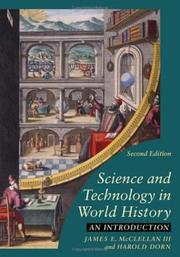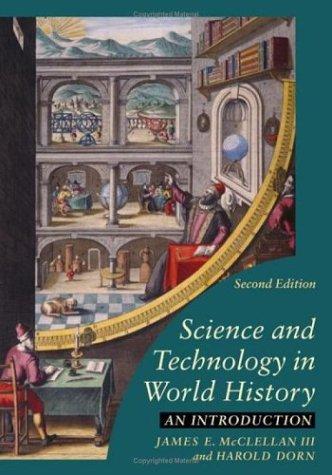Check nearby libraries
Buy this book

Check nearby libraries
Buy this book

Previews available in: English
Subjects
History, Science, Technology, Tool and die makers, Natuurwetenschappen, Outilleurs, Histoire, Sciences, Techniek, Technologie, Long Now Manual for Civilization, History Of Science, History of engineering & technology, History Of Technology, Science/Mathematics, Science / History, World - General, Science, history, Technology, history, Tool and die industry, World history, História da ciência, Tecnologia (história), Science--history, Technology--history, Tool and die makers--history, Q125 .m414 2006, 509Showing 5 featured editions. View all 5 editions?
| Edition | Availability |
|---|---|
|
1
Science and Technology in World History: An Introduction
April 14, 2006, The Johns Hopkins University Press
Paperback
in English
- second edition edition
0801883601 9780801883606
|
zzzz
Libraries near you:
WorldCat
|
|
2
Science and technology in world history: an introduction
2006, Johns Hopkins University Press
in English
- 2nd ed.
0801883598 9780801883590
|
aaaa
Libraries near you:
WorldCat
|
|
3
Science and technology in world history: an introduction
1999, The Johns Hopkins University Press
in English
0801858682 9780801858680
|
eeee
|
|
4
Science and Technology in World History: An Introduction
March 4, 1999, The Johns Hopkins University Press
Hardcover
in English
0801858682 9780801858680
|
zzzz
Libraries near you:
WorldCat
|
|
5
Science and Technology in World History: An Introduction
March 4, 1999, The Johns Hopkins University Press
Paperback
in English
0801858690 9780801858697
|
zzzz
Libraries near you:
WorldCat
|
Book Details
Edition Notes
Includes bibliographical references and index.
Classifications
External Links
The Physical Object
ID Numbers
Source records
Scriblio MARC recordIthaca College Library MARC record
Library of Congress MARC record
Internet Archive item record
Better World Books record
Better World Books record
Library of Congress MARC record
Internet Archive item record
Promise Item
marc_columbia MARC record
marc_columbia MARC record
ISBNdb
ISBNdb
harvard_bibliographic_metadata record
Work Description
In modern industrial society, the tie between science and technology seems clear, even inevitable. But historically, as James E. McClellan III and Harold Dorn remind us, the connection has been far less apparent. For much of human history, technology depended more on the innovation of skilled artisans than it did on the speculation of scientists. Technology as "applied science," the authors argue, emerged relatively recently, as industry and governments began funding scientific research that would lead directly to new or improved technologies. In Science and Technology in World History, McClellan and Dorn offer an introduction to this changing relationship.
McClellan and Dorn review the historical record beginning with the thinking and tool making of prehistoric humans. Neolithic people, for example, developed metallurgy of a sort, using naturally occurring raw copper, and kept systematic records of the moon's phases. Neolithic craftsmen possessed practical knowledge of the behavior of clay, fire, and other elements of their environment, but though they may have had explanations for the phenomena of their crafts, they toiled without any systematic science of materials or the self-conscious application of theory to practice.
McClellan and Dorn identify two great scientific traditions: the useful sciences, patronized by the state from the dawn of civilization, and scientific theorizing, initiated by the ancient Greeks. Theirs is a survey of the historical twists and turns of these traditions, leading to the science of our own day.
Without neglecting important figures of Western science such as Newton and Einstein, the authors demonstrate the great achievements of non-Western cultures. They remind us that scientific traditions took root in China, India, and Central and South America, as well as in a series of Near Eastern empires, during late antiquity and the Middle Ages, including the vast region that formed the Islamic conquest. From this comparative perspective, the authors explore the emergence of Europe as a scientific and technological power. Continuing their narrative through the Manhattan Project, NASA, and modern medical research, the authors weave the converging histories of science and technology into an integrated, perceptive, and highly readable narrative.
Community Reviews (2)
Feedback?History
- Created April 1, 2008
- 22 revisions
Wikipedia citation
×CloseCopy and paste this code into your Wikipedia page. Need help?
| August 20, 2024 | Edited by MARC Bot | import existing book |
| December 19, 2023 | Edited by ImportBot | import existing book |
| December 19, 2023 | Edited by ImportBot | import existing book |
| January 25, 2023 | Edited by Klaus Ford | Edited without comment. |
| April 1, 2008 | Created by an anonymous user | Imported from Scriblio MARC record |
















